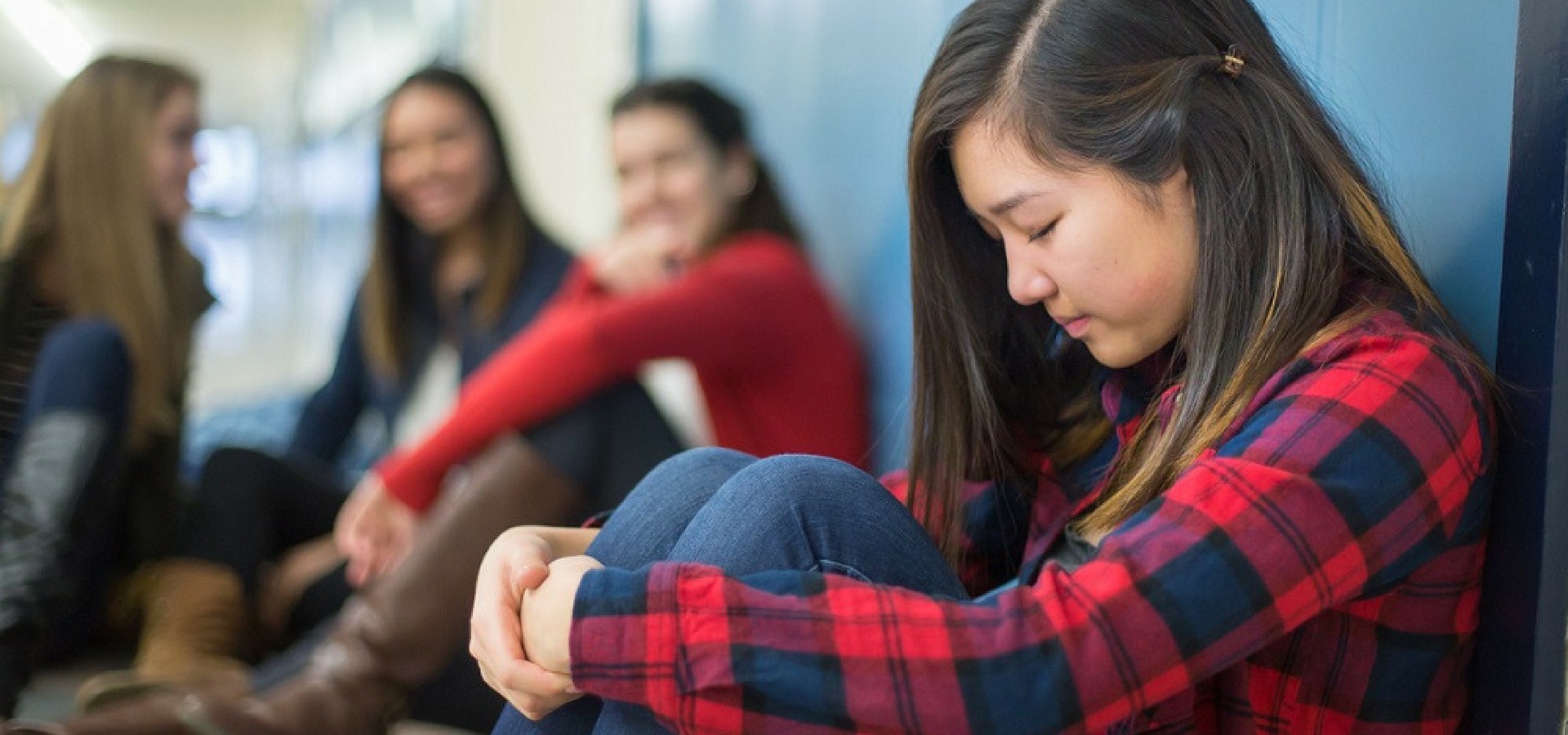Years ago, after I’d had my second son, I remember a friend (who had girls) saying to me that I was lucky to have boys, as when they’re teenagers, they’re a lot easier to handle than girls! Now that my boys are in their adolescent years (well, one is almost there) I realise there is some truth to that statement. Why, you may ask? Well, because of girls’ friendships. I have a niece who went through absolute hell for two years – she confessed to me years later that she actually contemplated suicide – and another who is going through a really difficult time right now.
Why are girls’ friendships such a minefield?
Girls appear to have a strict social hierarchy based on what society tells us is “ideal femininity”. Girls police each other on who is breaking the laws of appearance, clothing, interest in boys and personality. Up to about the age of ten (although it’s getting younger and younger), this isn’t a big issue, but when puberty begins to bud, it becomes more and more important to conform to these ideals.
In a rather interesting theory by two professors of zoology at the University of Cambridge, it is suggested that females of a variety of species use passive aggressive or indirect tactics to thin out sexual competition. In their article published in the Philosophical Transactions of the Royal Society B, they postulate that females evolved to use a lower risk form of breeding aggression by forming exclusionary social groups or “cliques” and generally being mean to females they see as a sexual threat. Sound familiar?
How does this affect girls’ behaviour?
Girls are really hard on themselves and on each other. They constantly compare themselves to each other and to the totally unrealistic female ideals they see portrayed in the media. If they don’t match up (which is unlikely), they may feel down about themselves. During adolescence the need for acceptance and approval by peers is paramount. If they are socially rejected, it may lead to unhealthy coping mechanisms like eating disorders, cutting, drug/alcohol abuse or risky sexual behaviour.
Girls should know what defines a healthy friendship and when to get out of a toxic friendship. Healthy friendships include qualities like mutual respect, trust, honesty, support, fairness/equality, separate identities and good communication. In unhealthy friendships, girls may be controlled, criticised and coerced into conforming to group standards they may not necessarily agree with. They should be able to differentiate between popular girls who are liked because they’re nice people, powerful girls who may be “popular” because they’re intimidating rather than likeable, and good leaders – who are able to recognise the value of individual girls who work as a team and are respectful and supportive of each other.
Envy and jealousy are rampant diseases in girl culture, encouraged by social media platforms. Since society decrees that girls should be good and well behaved, these feelings lie hidden and fester inside them. There is a hidden culture of aggressiveness in girls, depicted in many teen movies including “Mean Girls” and written about in books such as “Reviving Ophelia”, “Queen Bees and Wannabes” and “Odd Girl Out”. Girls form exclusionary social cliques, and some – like the “Queen Bee” and her Court – are skilled at putting down, excluding and being nasty to girls who are perceived to be threatening. They weaken others’ friendships, thereby strengthening their own power and influence. This behaviour is known as Relational aggression (intentionally hurting someone by harming their relationships to others) and it’s prevalent in girl culture.
It includes things like eye rolling, ignoring, building alliances, “bad” teasing and put-downs, spreading rumours and gossip, forming exclusive cliques and cyber bullying. It starts in about Grade 5 or 6 and peaks in Grade 8, at the beginning of high school. Fortunately, it tends to decrease later in high school as girls mature, their friendships become more stabilised and they learn to interact and support each other.
Relational aggressive behaviour is usually surreptitious and flies under the radar of parents and teachers. Many times, the perpetrators are “popular” girls who have quite a following – a.k.a. “Queen Bees”. Targets often don’t understand what they did to cause the behaviour and take on some of the blame. As adults, we don’t always understand how devastating it can be for a young girl to have to deal with this kind of social rejection. Targets may feel totally alone and isolated. Many of these incidents are caused by misunderstandings or assumptions in turn caused by girls’ fear of direct conflict and possible isolation.
Witnesses (bystanders) to this kind of relational aggressiveness are extremely important as they have the power to either enable the bullying to continue or stop it in its tracks by confronting the bully/bullies about their mean behaviour.
What can targets do about it?
Girls have to learn the art of direct communication and know that disagreements and confrontation in friendships are normal and healthy. Just like with other bullying, instead of keeping the pain of relational bullying or a breaking friendship to themselves, targets need to talk about it – to other friends and to adults who can offer advice and help them move on. They need to accept that although it is awful to go through, it is part of girl culture. They have to learn to be resilient and build up their self esteem again by keeping busy, pursuing their own unique talents and interests that make them feel happy and good about themselves and starting to make new, healthier and affirming friendships.
We understand that there are many aspects that encompass a Mother, Father or Child and strive toward providing resources and services that accommodates this.
Our content is aimed to inform and educate families on issues starting from pregnancy through to the challenges of the teen-age years.
- Say Hello to the Ultimate Holiday Brunch Bite - December 17, 2025
- Tiny Toons Looniversity Returns: Meet the Voice Behind Plucky and Hamton! - December 12, 2025
- From Pain to Possibility: Panado®’s New Marketing Campaign, Highlights The Joy Of Pain Relief - December 10, 2025






4 thoughts on “The Slippery Slope of Girls’ Friendships”
Thank you for the article it really helped me tremendously to understand what my daughter has been going through at school I now know how I can help her get through it and explain to her what it is all about also much appreciated.
We are so happy that you took something out of this article. Please be sure to browse our site for more.
I went through this in grade 8,at the start of high school. It was totally devastating!!! It destroyed my self esteem which I only regained in my 30s and 40s. I was a Tom boy and friendly with the boys and for the first time ever, while reading this, I realize that they must have seen me as a threat …… I wish I had know this decades ago!!! The scars run deep and I dread this for my daughter, now age 10 but I am teaching her that she is individual and unique and so far, she stands up for herself pretty well and is confident. I know only too well though, that this can change in a heart beat.
Thank you for sharing your story with us. It really does sound like you went through a terrible time that no child deserves. It does seem that you have this covered with your daughter and wish you the very best. We have no doubt that she will grow up to be a confident lady thanks to her mom!